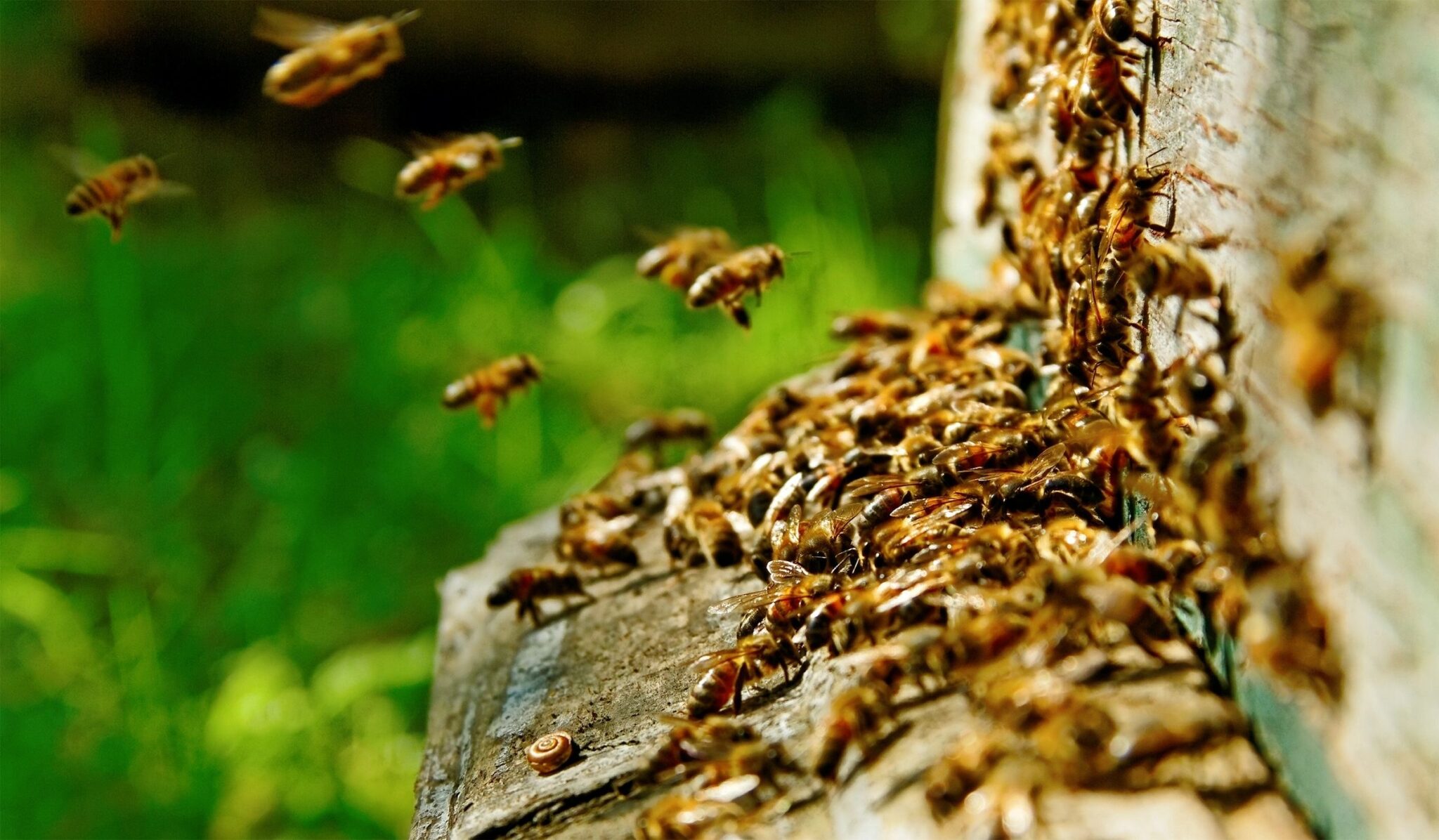Climate change and pesticides spell double trouble for bee behavior. Researchers in a recent study find that pesticide risk to bees varies depending on the temperature.
Every spring and throughout the summer, gardens around the world are brimming with colors and buzzing with floral visitors. Bees, butterflies, hoverflies, hummingbirds, and many other pollinators are busy visiting flowers to collect nectar and transferring pollen grains between flowers in the process. Pollination is required for the majority of the food produced around the world. What if the growth and behaviors of the pollinators changed? How would that affect us?
One of the factors that affects insect pollinators is the use of pesticides. Pesticides are widely used around the world in farms. These chemicals are not targeted and instead affect many different insects, including insect pollinators. Climate change is another factor that affects bee behavior as well as other insect pollinators. However, how climate change and pesticides together affect pollinators had not been studied until recently.
In a study from Imperial College London, Dr. Richard Gill and fellow researchers studied two commonly used pesticides at a range of temperatures to determine the effects that these two factors may have on bee behavior. This study’s result calls attention to the importance of factoring in environmental conditions while assessing pesticide risk to bees.
How does a combination of pesticides and temperature change impact bumblebees?
Pesticides have been found to affect the cellular biology of insect pollinators. Similarly, temperature changes have been found to affect various physiological processes in these insects, such as the rate at which they consume food, excrete wastes, and respond to toxic chemicals. Previous studies have shown that, under cold conditions, honeybees exposed to neonicotinoid pesticides (which are commonly used) have a harder time finding their way back to their nests. Bumblebees, on the other hand, have a hard time finding food once they are exposed to this type of pesticide. However, no study thus far has combined specific temperature conditions and concentrations of pesticides and then studied the effect of these factors on insect pollinator behaviors. Insect pollinators are exposed to pesticides under a wide range of temperatures, making it important to study the connection.
RELATED: Organic Gardening and Alternatives to Pesticides
In their study—published in the academic journal Global Change Biology—Dr. Gill’s research team set out to analyze how six different behaviors of bumblebees are impacted by a combination of different temperatures and pesticides. This study used bumblebees (Bombus terrestris), a species naturally found in the UK as well as across Eurasia. This type of bee plays a role in both wild and managed pollination around the world. The researchers studied bee exposure to the pesticides imidacloprid (a neonicotinoid) or sulfoxaflor (a sulfoximine). Neonicotinoids are widely used worldwide and insect pollinators are often exposed to these chemicals. Sulfoximine is a relatively new pesticide that is starting to replace neonicotinoids.
In this study, researchers tested the impact of pesticides and temperature changes on multiple behaviors: whether the bees respond to being touched (important for within-nest behavior), how the bees move and eat, how far the bees can fly, and the speeds at which they fly (important to find food, for pollination).
New findings on bee behavior
The research team tested these behaviors in response to either pesticide at three different temperatures: low (21°C, or 70°F), mid (27°C, or 81°F) or high (30°C, or 86°F).
The researchers observed varying behavioral responses for bees exposed to different concentrations of pesticides and temperatures. For example, in bees exposed to imidacloprid, the rate of walking increased under low temperatures. This started off as an initial sudden increase in the rate of walking, which slowly reduced with time. For bees exposed to a high concentration of sulfoxaflor under mid temperatures, there was an increase in the rate of walking. However, no other differences at any other temperatures or concentrations of sulfoxaflor were found.
Researchers also measured responsiveness, or the ability of bees to survive and be mobile. To test this, the researchers tapped the bee cages three times and recorded the number of bees that were walking. With bees that were not walking, the researchers turned them on their backs and monitored them for 30 seconds. Bees that turned themselves upright in these 30 seconds were classified as mobile. Additionally, researchers counted the number of surviving bees. They found that imidacloprid-exposed bees were unresponsive at low temperatures.
On the other hand, as temperatures increased, the sucrose (sugar) consumption of bees decreased. Bees exposed to pesticides flew a shorter distance under low and mid-range temperatures, and an even shorter distance under high temperatures. The speed of flight was not affected by temperature.
RELATED: Tips for a Bee-Friendly Garden
Future impacts on bee behavior
This study shows that a combination of temperature changes and pesticide exposure in bees can impact their behavior. These effects varied depending on the pesticide being used, with significant effects being seen only in the case of imidacloprid for most behaviors tested. The researchers noted that activities such as flying, which takes up a lot of energy, pesticides have a greater impact at higher temperatures. Activities that do not need as much energy, such as being responsive, consuming food, and walking, were impacted even at lower temperatures.
The research team concluded that more studies need to be done on how pesticides affect bee populations. This information could help scientists understand the varying risks to bees and other insect pollinators from particular pesticides in different climate regions of the world. Further studies could also shed light on how pollinators are affected by pesticides being applied to crops during different seasons of the year.
Overall, this study highlights the importance of studying the combined effects of different factors on bee behavior and on pollinators. This research article was published in the peer-reviewed journal Global Change Biology.
References
Kenna, D., Graystock, P., & Gill, R. J. (2023). Toxic temperatures: Bee behaviours exhibit divergent pesticide toxicity relationships with warming. Global change biology, 29 (11), 2981-2998. https://doi.org/10.1111/gcb.16671

About the Author
Vaishnavi Sridhar completed her PhD in Cell and Developmental Biology from the University of British Columbia. She loves discussing science, taking nature walks, and cooking in her free time.




